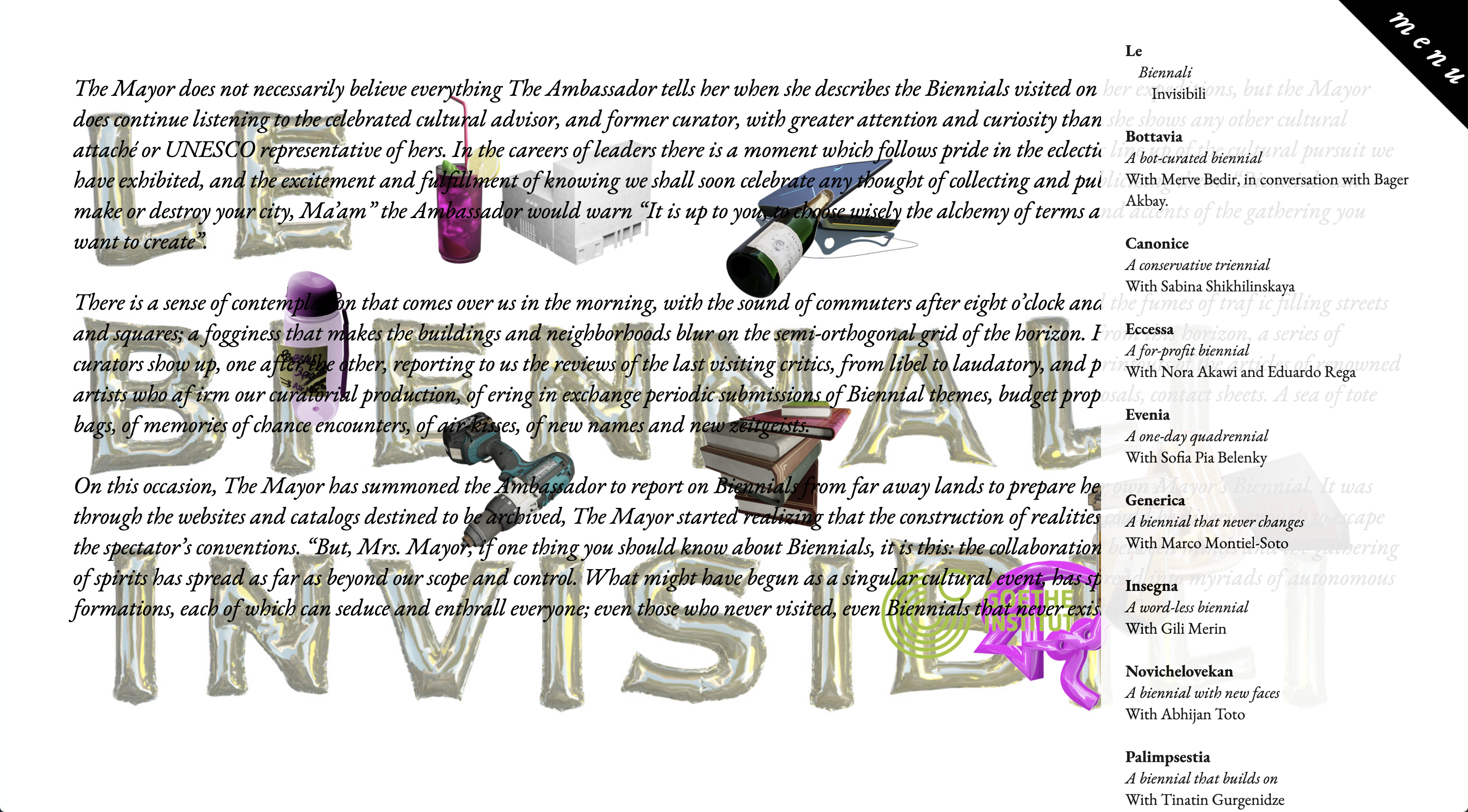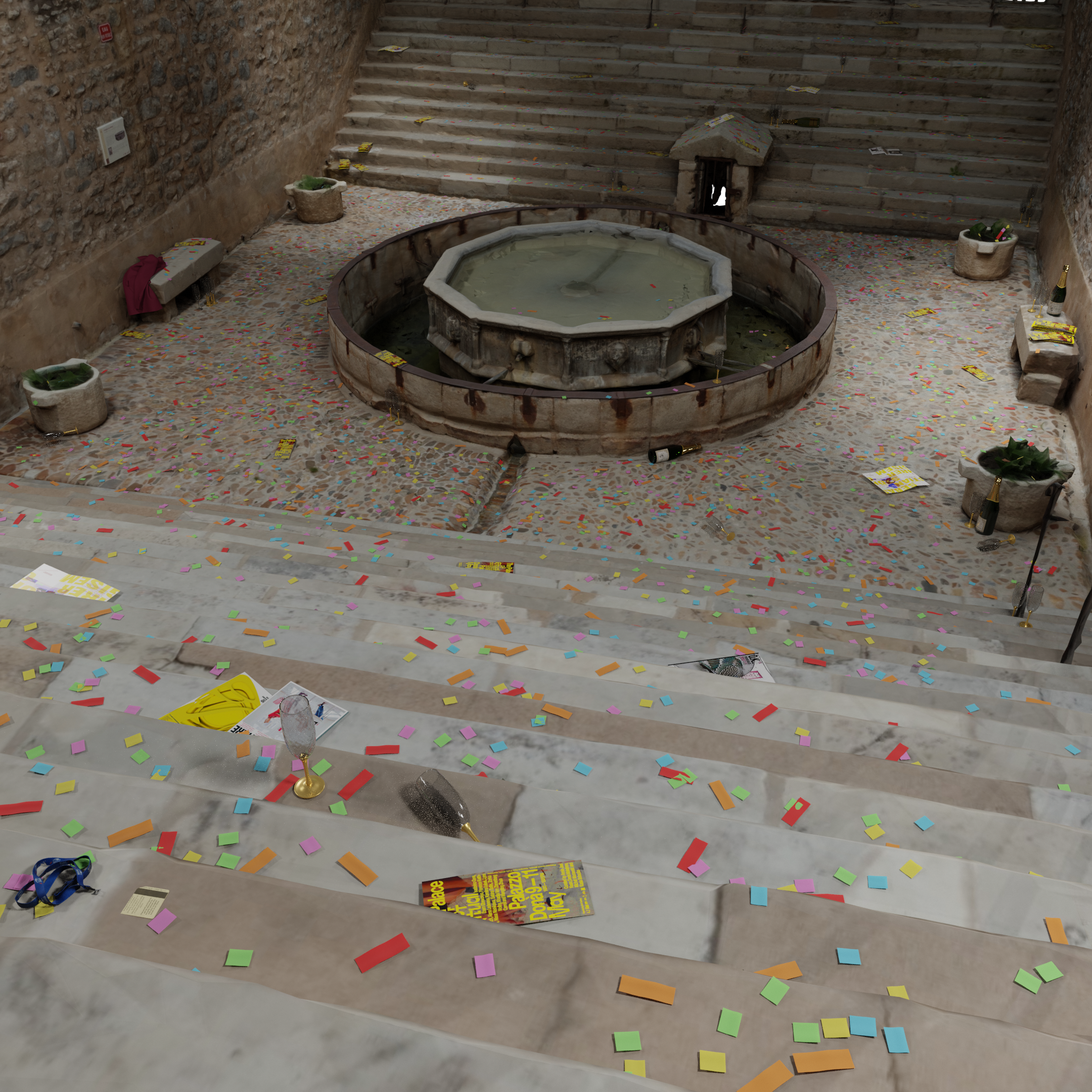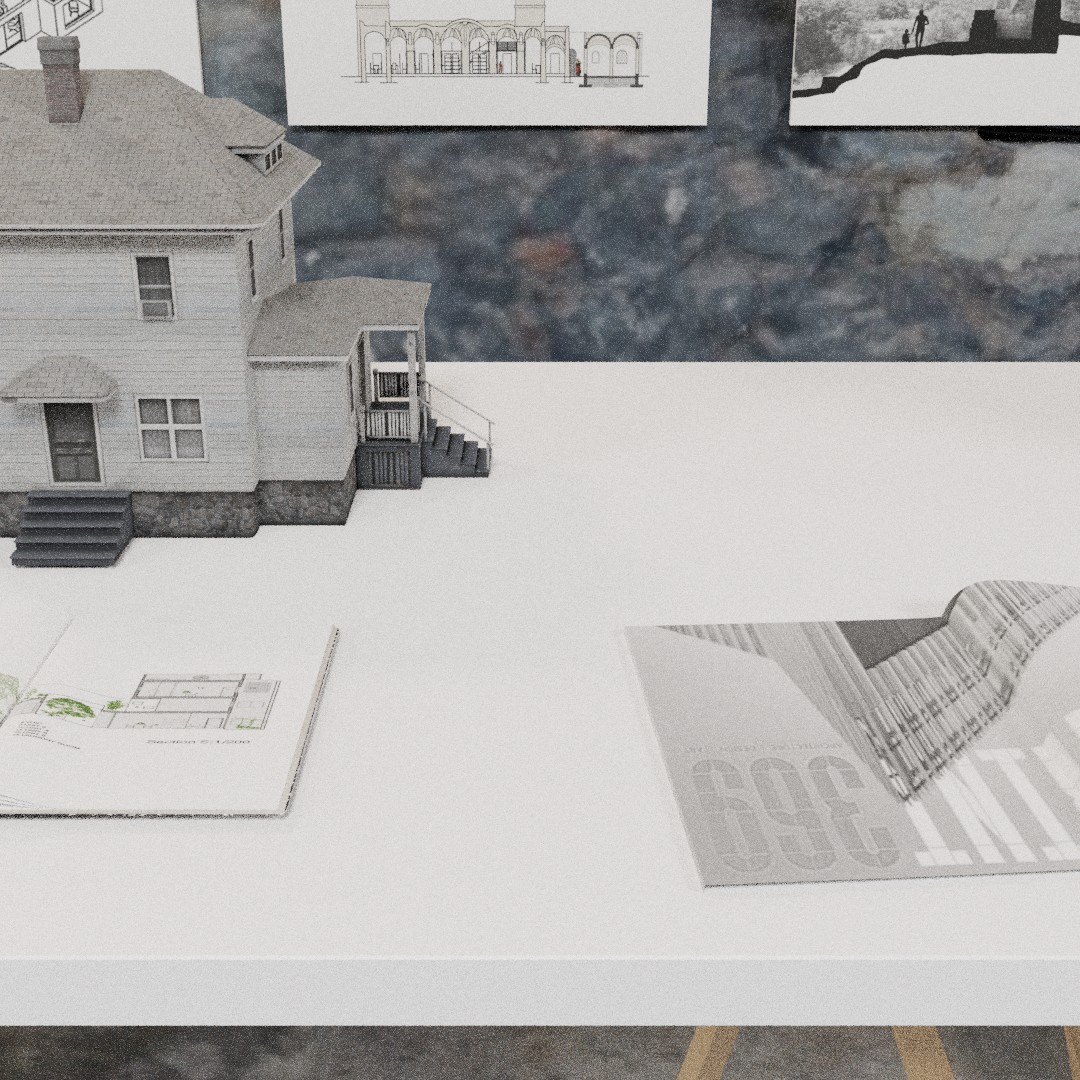











Le Biennali Invisibili 2.0
Location: online
Status: completed
Year: 2021
with Eduardo Cassina and Tijn van de Wijdeven
commissioned by Goethe-Zentrum Baku and curated by Alfons Hug.
Contributors: Abhijan Toto, Sofia Pia Belenk, Georg Seeßlen, Gili Merin, Marco Montiel-Soto, Nora Akawi, Eduardo Rega , Araks Sahakyan, Tinatin Gurgenidze, Matīss Groskaufmanis, Merve Bedir, Sabina Shikhlinskaya.
Collaborators: Tikumporn Panichakan Webpage: https://lebiennaliinvisibili.org/ Web design: Yurii Tymoshenko
Location: online
Status: completed
Year: 2021
with Eduardo Cassina and Tijn van de Wijdeven
commissioned by Goethe-Zentrum Baku and curated by Alfons Hug.
Contributors: Abhijan Toto, Sofia Pia Belenk, Georg Seeßlen, Gili Merin, Marco Montiel-Soto, Nora Akawi, Eduardo Rega , Araks Sahakyan, Tinatin Gurgenidze, Matīss Groskaufmanis, Merve Bedir, Sabina Shikhlinskaya.
Collaborators: Tikumporn Panichakan Webpage: https://lebiennaliinvisibili.org/ Web design: Yurii Tymoshenko
Not all biennials are the same. However, the format of showcasing new work, triggering discussions, and letting new canons emerge, as a time-based event that takes place once every two years at the same location, has become the pilgrimage for the culture industries in the new millennium. Biennials - or biennales, a bastardization of the italian original term that has slipped into as many different languages as locations - not only have the power to forge discourse, but also to unite transient communities by gatherings every two or three years, and cities that are momentarily transformed and forever associated with those festivals of human culture.
Le Biennali Invisibili is an online project https://lebiennaliinvisibili.org/ that explores eleven imaginaries of such encounters, under the same lens that Italo Calvino created when describing alternative realities in his book Le città invisibili (Invisible Cities), learning from his extraordinary capacity of orchestrating synthetic oneiric commentaries. Le Biennali Invisibili embraces fiction and pseudo-reality as a framework for curatorial pursuit, as a series of virtual events, proposing -and critiquing- the conventional celebration of the design & art community.
“Visitors” can get a sense of each “invisible” kermesse through multiple elements collected on the project online showcase:
- the story text, constructed by recreating Calvino’s style, through a process of critical re-writing;
- a three dimensional environment embedded in each webpage with a few specific images of it, to construct a fragmented vision through glimpses of its atmosphere;
- and a critical response from one of the external contributors, all familiar and participant in the international biennial circuits, , who have been invited to join this heterogeneous conversation, underlining the dialogic nature of the invisible biennials, that welcome diverse modes of reading and personal interpretations.
The Invisible Biennial texts were written by the authors of the project in a collaborative manner, collaging together parts of text, and adapting sections from the original ‘Invisible Cities’ book by Calvino.
The three-dimensional environments, sparked from the stories, were generated by incorporating models and textures gathered from online CC sharing platforms, in a 3d-hoarder ready-made process, constituted another type of encounter, a feedback loop influenced by the transformations in the stories as they were being written up
Through the interface with various externalities, like the network of contributors, spreading from New York to Hong Kong, the project becomes an open conversation, shaped also by contingencies. On the other hand, the incorporation of Calvino’s text fragments brought slight distortions and even moments of “lost in translation”, welcomed as inspiring detours.
Through these provoked exchanges or perhaps even accidents, in different moments of the development trajectory, the critical questions brought up interestingly evolved and expanded, as did the speculative propositions, conceived in the space of opportunity offered by the fictional licence, progressively taking the shape of increasingly plausible ideas, making the entire process also a non-linear, yet explorative, operation of design, even when by means of its byproducts.
